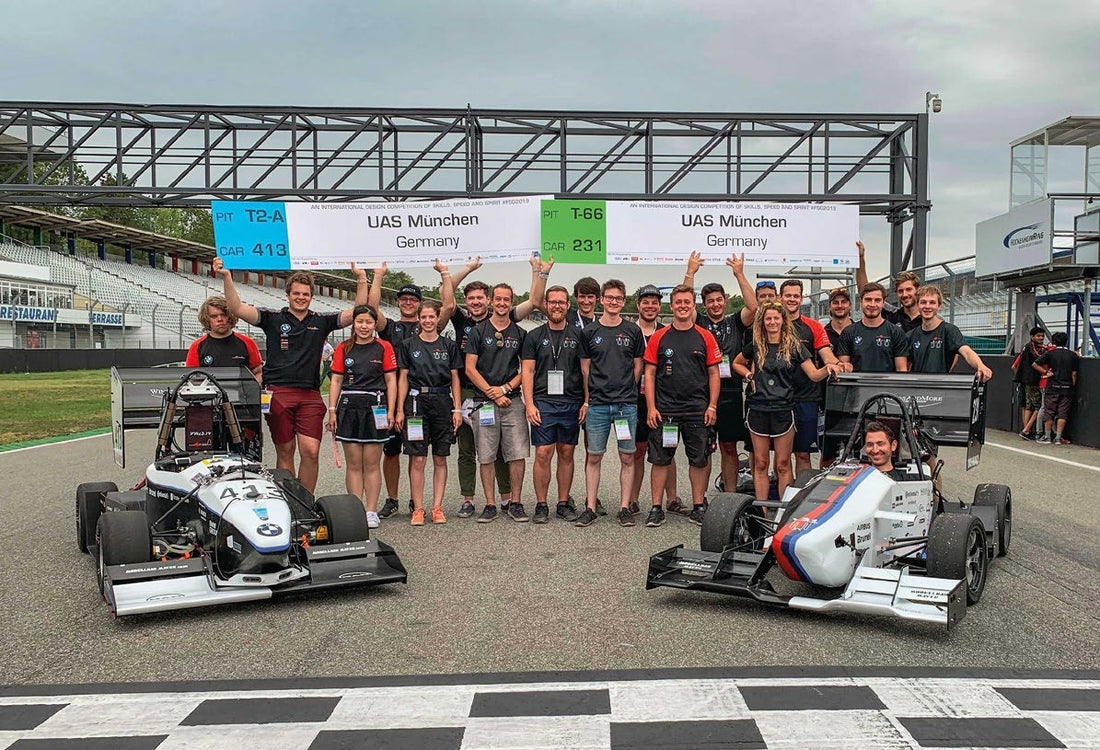MunicHMotorsport- Over 100 printed parts in a racing car

Customer: Max Schau, Engineering team, MunicHMotorsport
Country: Germany
Industry: Automotive, Electronics
Application: End-Use Part, Prototyping
Uses: Brackets, Exposed to Electricity, Enclosures
Top reasons: Accuracy, Complexity, Durability, Low Operating Cost

Background
Formula Student is a racing league that pushes the limits of the volunteer teams to extreme engineering feats. Teams from universities all around the world design and build electric, all-wheel-drive, carbon-fiber monocoque race cars to compete in an array of challenges.
MunicHMotorsport, based out of Hochschule, Munich, shared how additive manufacture using the Sinterit Lisa PRO has enabled them to exceed traditional engineering limitations.

Problem
The team is broken up into subgroups that are responsible for different aspects of the car. The engineering team is split into Chassis, Aerodynamics, Suspension, Electronics, and other groups. Each team has its own considerations and sometimes bridging the gaps between each domain can cause difficulties.
Formula Student, as the name implies, means the team is made up of student volunteers and funded by donations and sponsorships, as such frugality is a key design principle for many subsystems.
Equipment used: Sinterit Lisa PRO 3D Printer
Material used: PA12

Solution:
The design flexibility of additive manufacturing, with the same quality and near-isotropic performance of industrial systems, has been the go-to solution for mating solutions from different teams.
An example is the cable gland on the chassis. The Chassis Team, Suspension Team, and Electrical Team had their own inputs to the design and the 3D printed solution is able to cater to all requirements.
By maximizing the suite of parts made in-house on the Sinterit Lisa PRO, they are able to minimize costs. The number of 3D printed parts has increased over the years.
The current car, the PWeX.20, has well over 100 parts 3D printed.
